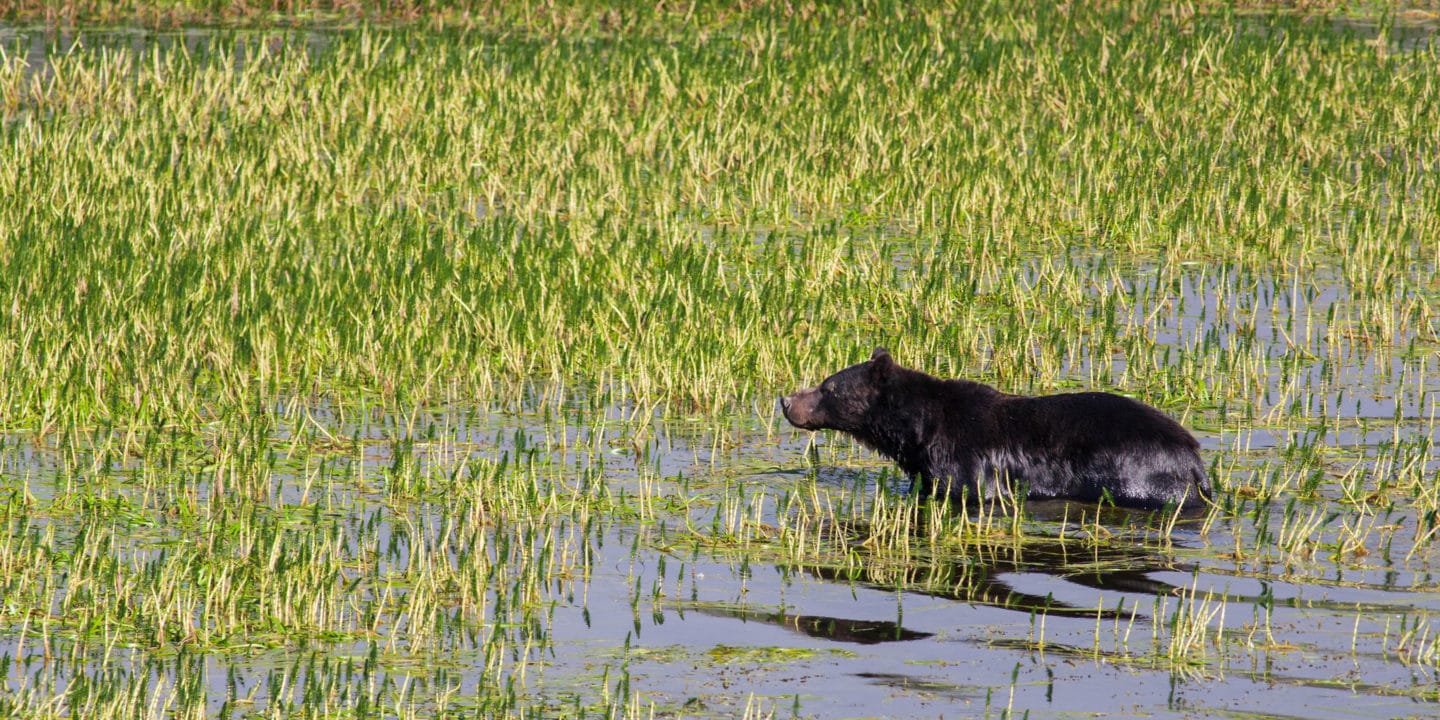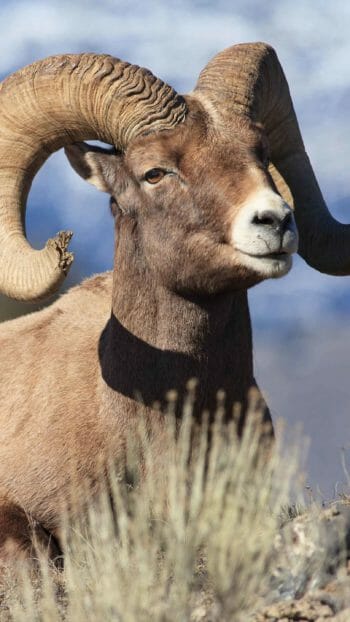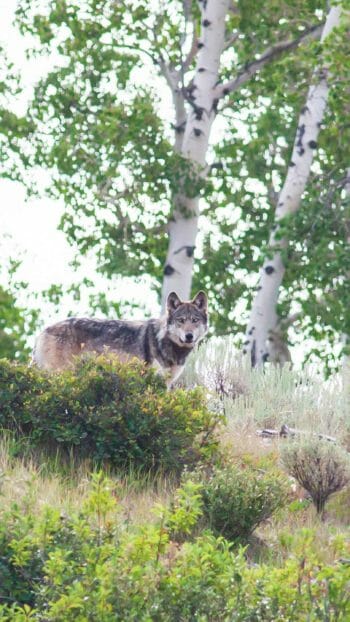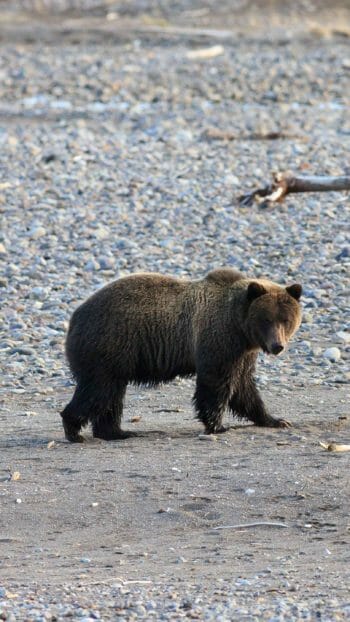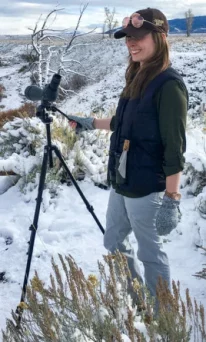From mighty grizzlies to elusive wolves and thundering herds of bison, Yellowstone National Park is a living, breathing showcase of North America’s most iconic wildlife where every season offers a different kind of magic.
Whether you’re planning a summer getaway or a winter escape, this guide reveals what animals you may encounter on your adventures, including when and where to spot Yellowstone’s most unforgettable animals.
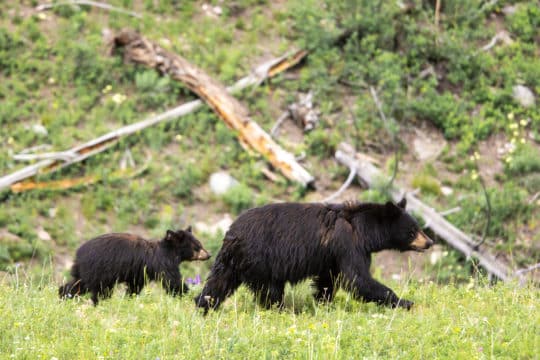
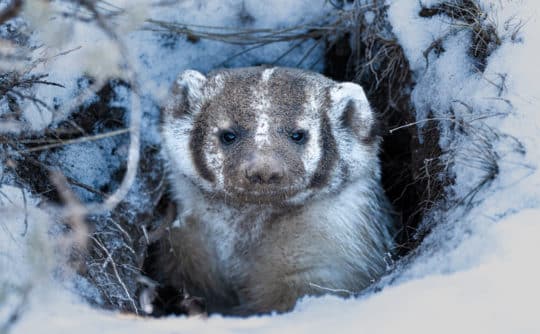
Mammals of Yellowstone
Predators
Grizzly Bears are Yellowstone legends. As they lumber out of hibernation in early spring, you might catch them foraging in open meadows or fishing along riverbanks. These awe-inspiring creatures are at their most active from spring through fall.
Black Bears roam the forests, preferring thick woods where they snack on berries and insects while climbing trees to escape danger or take a nap. Smaller and more agile than grizzlies, they’re a delight to spot from a distance. Don’t let their name fool you- they can be brown in color which can make them look similar to grizzlies!
Wolves, reintroduced in 1995 after being absent for 70 years, have reclaimed their role as top predators in the park. In the Lamar Valley—especially in winter—you can experience their haunting howls and complex pack dynamics.
Coyotes are Yellowstone’s crafty survivors. Smaller than wolves and incredibly adaptable, they’re commonly seen trotting through valleys and roadside meadows. Familiarizing yourself with the differences between coyotes and wolves will help you be able to identify which canid you are looking at!
Ungulates
Bison, with their massive frames and iconic humps, are Yellowstone’s heavyweights. You’ll see them grazing across vast plains year-round—but summer’s mating season brings thundering stampedes and dramatic clashes.
Elk are one of the park’s most photogenic animals. Watch them growing their magnificent antlers in summer and listen for their eerie bugles during the fall rut—it’s one of Yellowstone’s most powerful natural concerts.
Moose are solitary giants, often found near marshes and rivers. Their massive antlers and calm presence make every sighting feel like a personal encounter.
Bighorn Sheep scale cliffs like mountain ninjas. Spotting their lambs hopping across steep ledges in spring is nothing short of breathtaking.
Other Notable Mammals
Beavers are Yellowstone’s busiest engineers, building lodges and dams year-round. If you’re lucky, you’ll see them hard at work at dusk.
River Otters are playful, sleek swimmers that turn every snowy riverbank into a playground. Watch them slide and splash, especially in winter.
Mountain Goats, though not native, now call Yellowstone’s high country home. With their shaggy coats and cliff-defying balance, they’re a rare but impressive find.
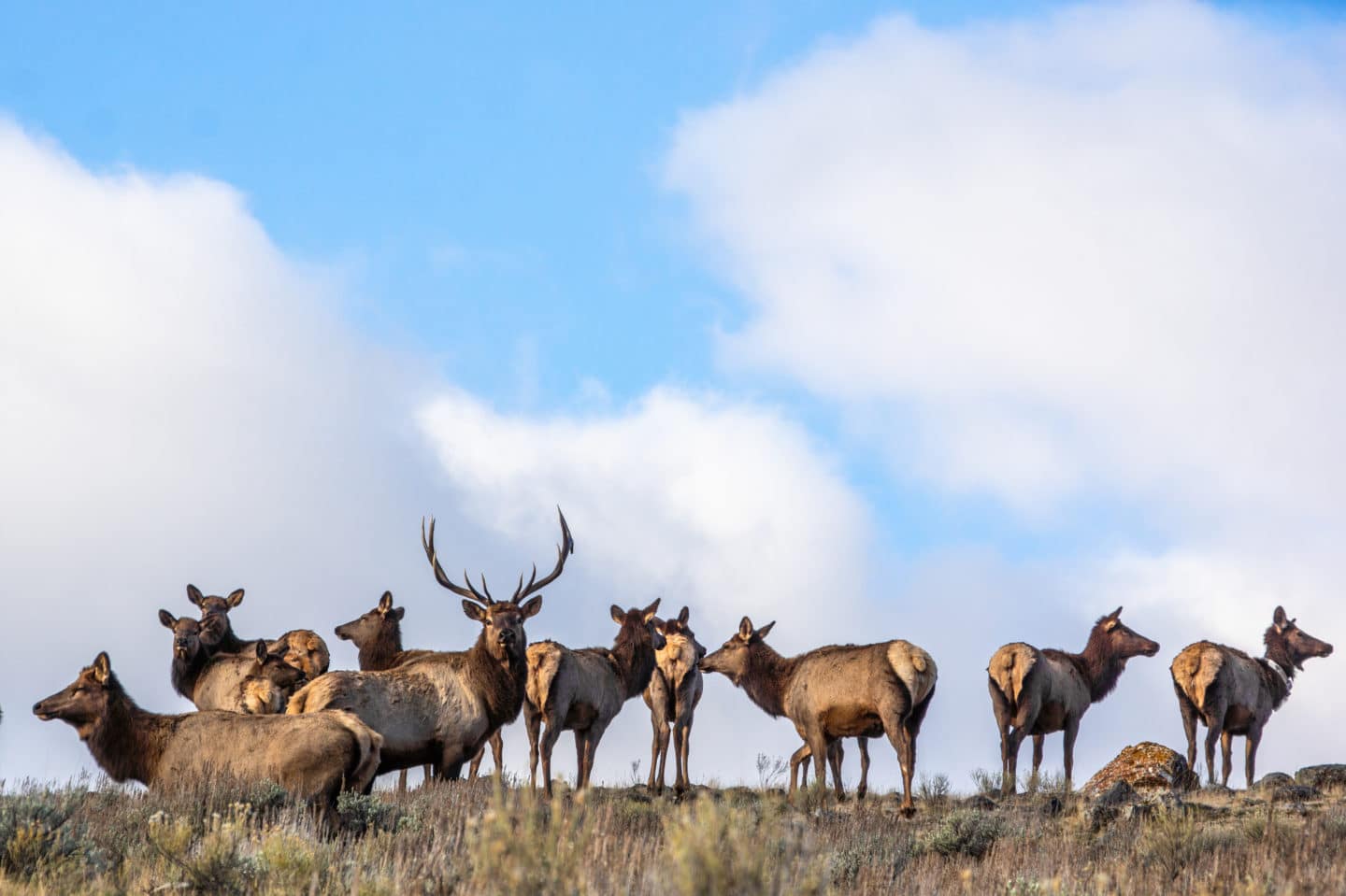
Birds of Yellowstone
Yellowstone isn’t just for mammal lovers! Nearly 300 species flock to the park, including:
Bald Eagles soaring the skies
Ospreys fishing with precision
Trumpeter Swans gliding on alpine lakes
Sandhill Cranes dancing in open meadows
Spring and summer are prime seasons for birdwatching, with a chorus of migration, nesting, and fledging filling the skies.
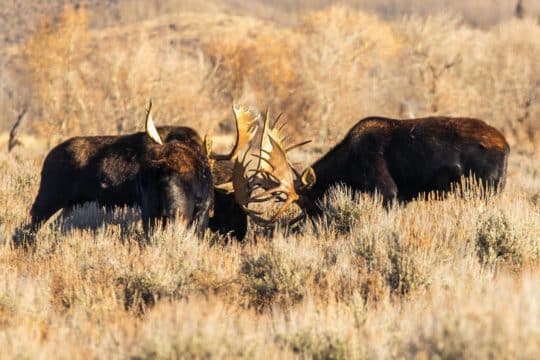
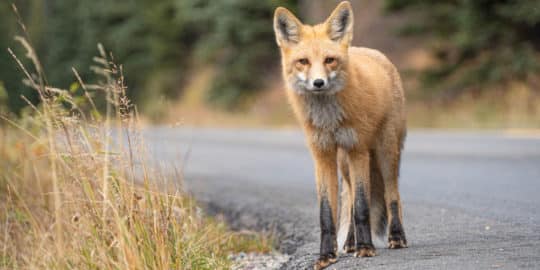
Seasonal Wildlife Viewing Guide
Spring (March–May)
- Bears awaken and stretch their legs
- Elk and bison welcome their young
- Songbirds return and wetlands come alive
- Melting snow encourages more wildlife in motion
Summer (June–August)
- Wildlife is abundant and active
- Perfect time for photography and guided tours
- Bison rutting season offers bold, dramatic encounters
- Longer days mean more chances to explore
Fall (September–November)
- Elk bugling fills the valleys
- Bears forage intensely before winter slumber
- Moose enter their rutting season
- Fewer crowds, vivid foliage, and crisp air
- A golden season of wildlife drama and quiet beauty
Winter (December–February)
- Wolves, coyotes, and foxes stand out in the snow
- Bison steam in geothermal areas, surrounded by frost
- Snowcoach safaris offer front-row seats to raw nature
- Yellowstone at its most peaceful and wild
Wildlife Viewing Tips
- Keep a safe distance—100 yards from bears/wolves, 25 yards from others
- Binoculars and spotting scopes are your best friends
- Early mornings and twilight hours are prime viewing times
- Stay on trails, follow ranger advice, and respect the wild
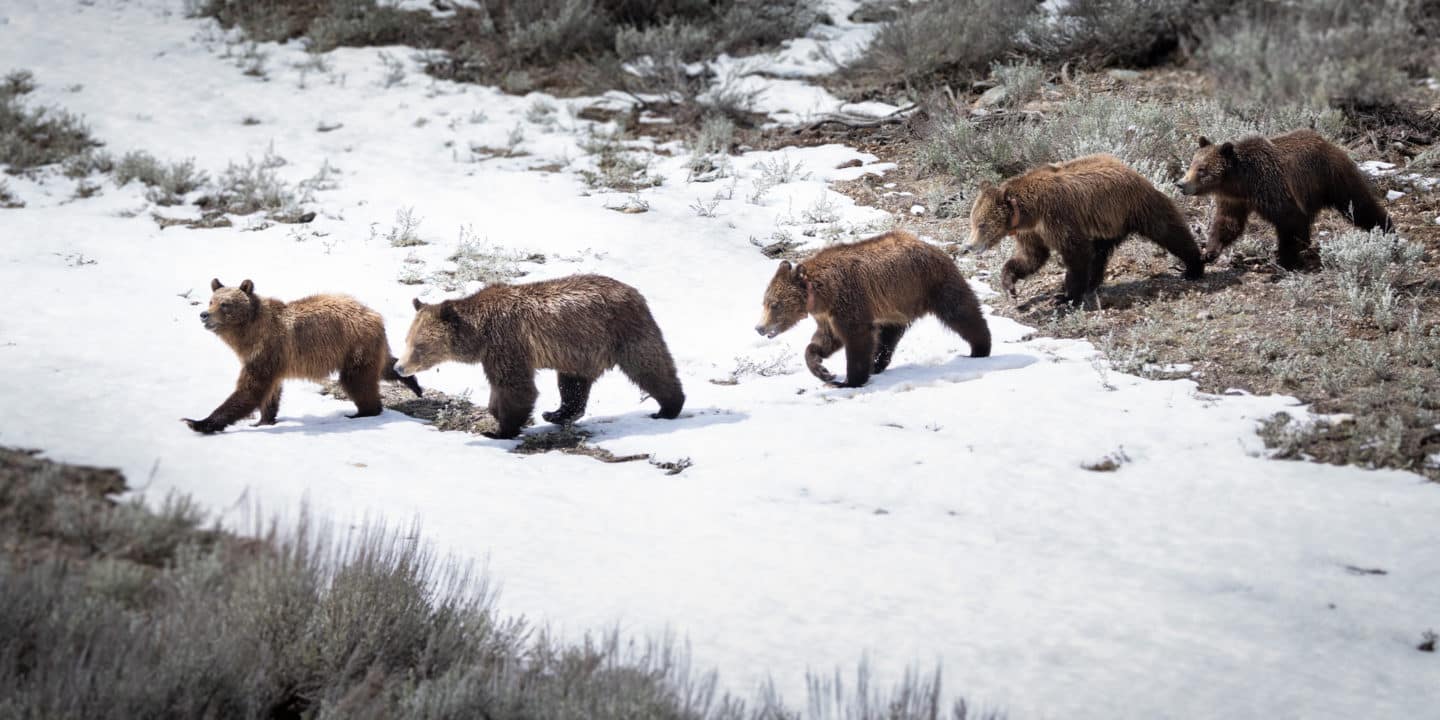
Guided Wildlife Tours
Want to turn a great trip into an unforgettable one? Join a guided wildlife tour with Yellowstone Safari and experience the park like never before. You will learn from passionate, experienced guides with thousands of hours in the field. Explore off-the-beaten-path and wildlife hotspots that only locals know about. You can also customize your tour to suit photographers, families, or solo adventurers, focusing more on different wildlife or landscapes depending on your interests. Only have a day to explore? Our Yellowstone Wildlife Safari has you covered! If you’re looking for a longer, more immersive adventure, our 2-Day and 3-Day Bear and Wolf Safaris really showcase Yellowstone’s wildlife and are sure to deliver the experience of a lifetime.
Spots fill up fast, so don’t wait—book your Summer Wildlife Tour or Winter Wildlife Tour today!
FAQs
What is the best time to see animals in Yellowstone?
Spring and early summer are best for Yellowstone’s bear activity and newborn animals. Winter is ideal for spotting wolves and enjoying peaceful wildlife moments.
Where can I see wolves in Yellowstone?
The Lamar Valley is your best bet—especially in winter, when wolves are most visible. There are wolves in other areas of the park, though not seen as consistently as in Lamar Valley.
Are guided tours worth it for wildlife viewing?
Absolutely! Guides know where to look, when to go, and how to keep you safe—plus, they share fascinating facts along the way. They bring along snacks, picnic lunches, and professional gear for the most successful wildlife viewing excursion!
Is it safe to view wildlife on my own?
Yes, but always follow park rules! Keep the legal distance of 100 yards from bears and wolves, and 25 yards from other animals, and never approach or feed the wildlife.
Are animals active in winter?
Yes! In fact, some are easier to spot against the snow, and behavior like wolf hunting or bison wallowing is easier to observe.
Can I take good wildlife photos without professional gear?
Yes! A good zoom lens or spotting scope helps, but patience, lighting, and composition matter most. Even phones can capture magical moments, and your guide may even be able to capture close-up photos through their spotting scope.

